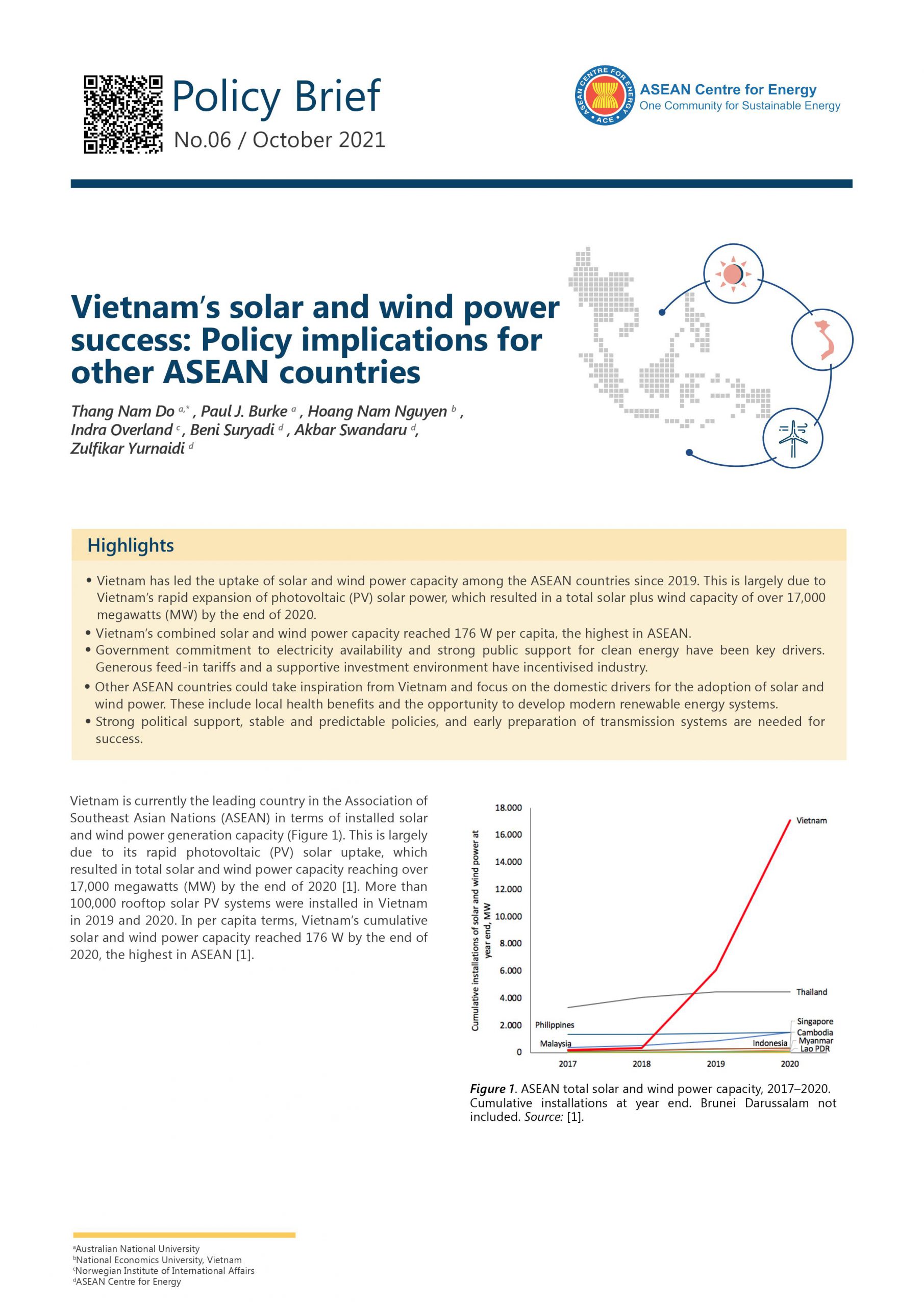Vietnam’s solar and wind power success: Policy implications for other ASEAN countries

Tuesday, 19 Oct 2021
Category
Author
Thang Nam Do, Paul J. Burke, Hoang Nam Nguyen, Indra Overland, Beni Suryadi, Akbar Swandaru, Zulfikar Yurnaidi
This policy brief is based on the journal article published in Energy for Sustainable Development and a product of the ASEAN Climate Change and Energy Project (ACCEPT), which is managed by the ASEAN Centre for Energy (ACE) in cooperation with the Norwegian Institute of International Affairs (NUPI) and financed by the Ministry of Foreign Affairs of Norway [grant numbers RAS 2805 RAS 17/0013, 2018].